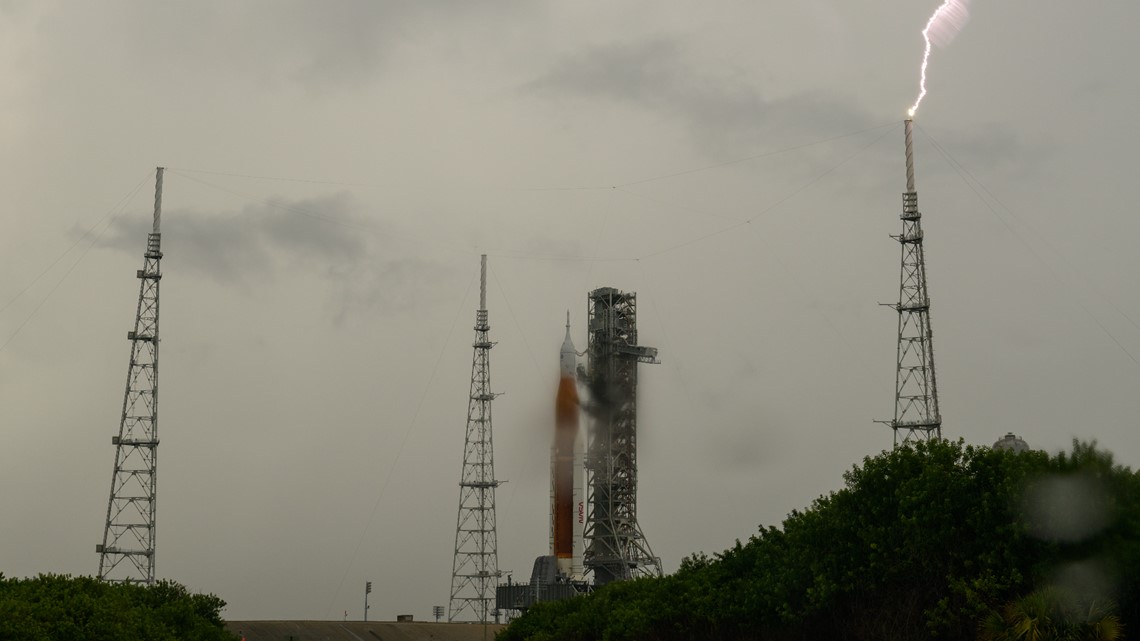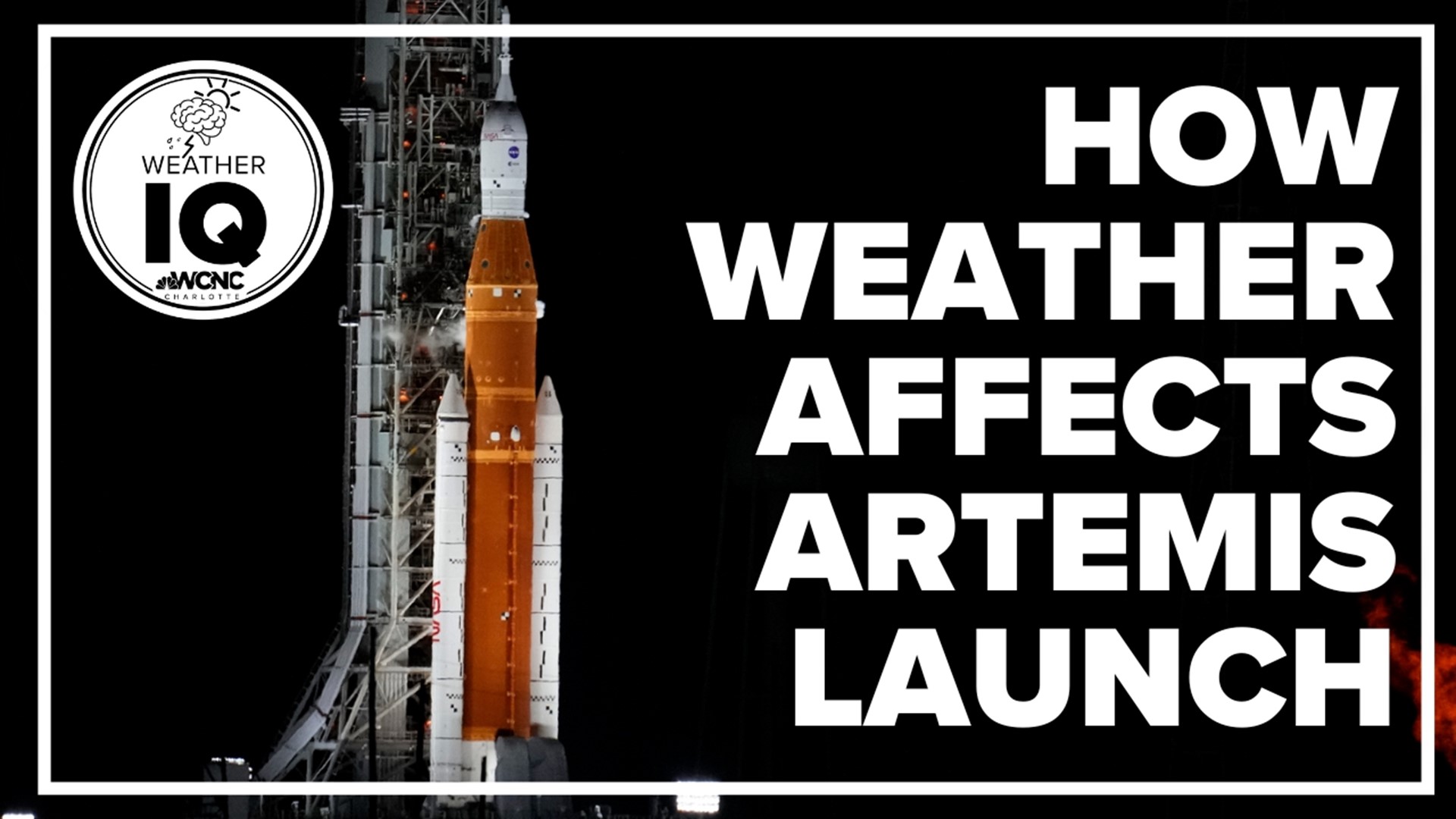CHARLOTTE, N.C. — With upcoming Artemis launch windows happening in the afternoon and evening hours, NASA is going to have to contend with the infamous afternoon thunderstorms of Florida.
"Weather Launch Commit Criteria," which define the weather conditions in which a NASA launch can and cannot happen, have requirements for precipitation, lightning, temperature, and other conditions.
Artemis-1 is set to launch from Launch Complex 39B at Kennedy Space Center in Cape Canaveral, Florida. As seen Saturday, Aug. 27, a series of lightning rods around the launch pad will try and protect the spacecraft from any lightning strikes.


In order to launch, officials will be looking at more than just the weather at the launch pad.
“The conditions have to be right at launch time, and throughout the flight along that path of the flight," explained Tony Rice, a NASA ambassador based in Raleigh, North Carolina. "And as long as they can find that amount of time that meets the launch weather criteria, it can go”
The infamous afternoon thunderstorms seen along the coast are caused by the sea breeze. This is the same process that creates popup thunderstorms often seen at beaches and along the coast.
Sea breezes occur because of the unequal heating rates of land and water. During the day, the sun causes the land surface to heat up faster than the water surface.
As the warm air over the land is rising, the cooler air over the ocean is flowing back over the land surface to replace the rising warm air. This process can kick off thunderstorms.
As the weeks go on, NASA will also have to contend with the peak of the Atlantic hurricane season, which historically shows a rapid increase in tropical activity this time of year.

